Six Nations 2021: Consistency, Keenan and set-piece struggles - what will we see from Ireland?
- Published
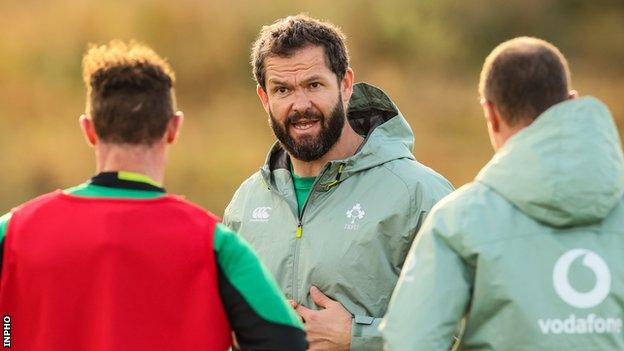
Farrell's first year as Ireland head coach was heavily disrupted by the pandemic
Six Nations 2021: Wales v Ireland |
|---|
Venue: Principality Stadium, Cardiff Date: Sunday, 7 February Kick-off: 15:00 GMT |
Coverage: Live on BBC One, BBC Radio Ulster, BBC Radio Cymru, BBC iPlayer, BBC Radio 5 Live Sports Extra, BBC Sport website and app |
Nine games, six victories and three losses. Undefeated at home, winless away. Those are the key numbers from Andy Farrell's first year in charge.
As Ireland enter 2021, they are still waiting to produce that performance that will make those outside the camp believe what is being said inside it: That Ireland are as good as any side in world rugby.
Last year they won every game in which they were favourites and lost every one in which they were underdogs - the results were exactly on par with expectation.
As Rory Best alluded to in his first BBC column, for obvious reasons 2020 was not the best year to accurately assess how Farrell will fare as head coach.
By the end of this year, and indeed by the end of the Six Nations, we can expect to know a lot more about Ireland. But what do we expect from them now?
Working off what we saw in autumn, here are a couple of noteworthy numbers that help paint the picture of what we know about this squad.
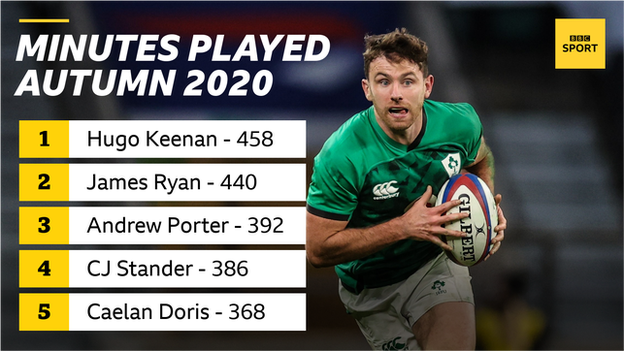
This time last year Hugo Keenan's name was not among those being considered for selection.
Twelve months on and with just six caps to his name, the Leinster man is the closest thing Ireland have to a mainstay in a very changeable and highly-contested back three.
Two tries against Italy on debut saw Keenan immediately put his name in lights, but over the course of the autumn it was not his try-scoring prowess that kept him in the team.
The 24-year-old has quickly become Ireland's Mr Reliable; defensively solid, excellent under the high ball and rarely found out of position. The obvious comparison, then, is to Rob Kearney, for whom the exact same qualities made him an Ireland regular for a decade.
Keenan's provincials team-mates James Ryan and Andrew Porter were the only other players to start all six of Ireland's autumn outings.
While Ryan's place as the colossus of Ireland's pack is in no doubt, the autumn performances of Porter have given Farrell a welcome headache going into 2021.
The returning Tadhg Furlong is, when fully fit and on form, undroppable at tight-head - leaving Porter in a tussle with Cian Healy for the loose-head spot.
Porter's 2020 performances proved him more than capable of holding down a starting international spot, and his ability to play both sides is a useful string to Farrell's bow, which means the head coach might be less inclined to rush Furlong back if he is not at 100%.
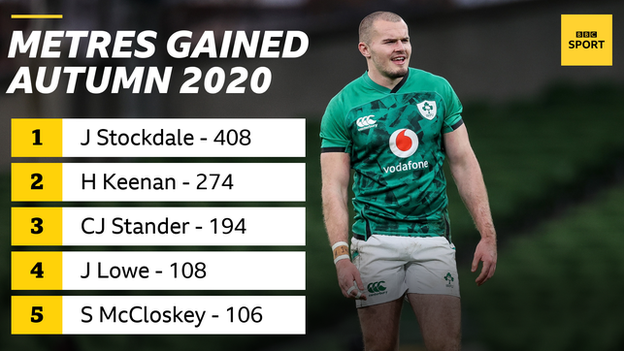
Injury has ruled Jacob Stockdale out of Ireland's two opening fixtures against Wales and France with the Ulster man targeting a return against Italy on 27 February.
The autumn campaign did not tell us much we didn't already know about the 24-year-old - he remains one of Ireland's most dangerous attacking threats, with an ability to wreak havoc with ball in hand unrivalled by most.
A move to full-back offered him more space to run into and gave him additional opportunity to rack up the metres, something he has done consistently since his debut in 2017 - this part of his game is not in doubt.
What remains uncertain is his defensive play and the consistency that has become Keenan's early hallmark. In his four autumn starts Stockdale conceded 10 turnovers, by far the most in the squad.
As ever, the question will be whether his obvious strengths outweigh the flaws in his game - ultimately a player of his talent will not be ignored, and in his absence Ireland will need other backs to step up and ask those questions of a defence.
The returning Jordan Larmour will go some way to offset Stockdale's absence, indeed the two players hold very similar reputations in terms of strengths and weaknesses.
Then there is James Lowe, who carried for 108 metres in his first two Ireland appearances. Fitness permitting, the New Zealand-born Leinster wing looks set to be a fixture of the side in the Six Nations where, like Keenan, he could very quickly find himself to be a tough name to replace on the teamsheet.
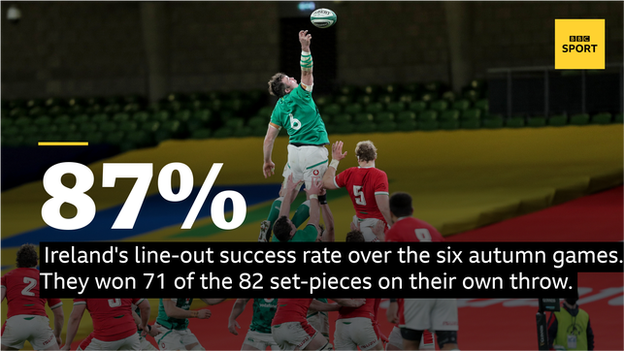
If the microscope was not already on the Irish line-out going into this tournament, the introduction of Paul O'Connell as forwards coach ensured that it certainly is now.
The Munster legend is synonymous with Ireland's set-piece, and is now charged with improving a much-maligned facet of Ireland's game.
In his first press conference on Tuesday, O'Connell pushed back on the idea that Ireland's line-out was in dire need of improvement - a few misfires in and around both five-metre lines accentuated the issues which, he believes, are far from catastrophic.
The stats from autumn would largely back him up, with Ireland winning just shy of nine out of 10 contests on their own throw.
However, their worst performances at the line-out came in their two losses against France and England, where they turned the ball over seven times. If those sides are the current standard bearers for European rugby, tightening the screws at the set-piece is an obvious and achievable fix.
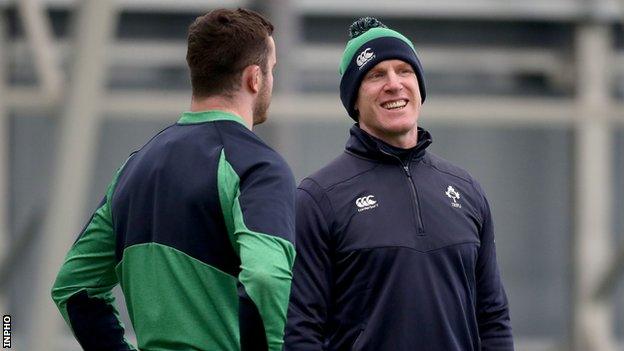
Paul O'Connell is charged with improving the Irish line-out in his new role of forwards coach
Apart from the opening game against Italy where both stats were 50/50, Ireland enjoyed considerably more possession and territory than their opponents throughout the autumn.
As Johnny Sexton alluded to on Wednesday, Ireland's ability to set up good field position or hold onto the ball is not in question.
The possession and territory stats only go to prove that dominating either or both facets guarantees nothing in terms of the overall picture of the game.
Against England at Twickenham, Ireland had 68% possession and 72% territory, yet never looked likely to cause an upset.
Indeed a statistical analysis of the England game would point to Ireland as the dominant side; they made more than twice as many carries while forcing England to make nearly three times as many tackles.
The statistics go some way to indicating where Ireland went right and wrong last year, but only some way.
Turning possession and territory into more points and wins is the focus for Farrell and his men, about whom we will know much more come the end of March.

The Monday Night Club: How has Pep turned things round and can Micah get Timo Werner firing?
Hip Hop that shook America: How Kanye West challenged ideas about rap and religion
